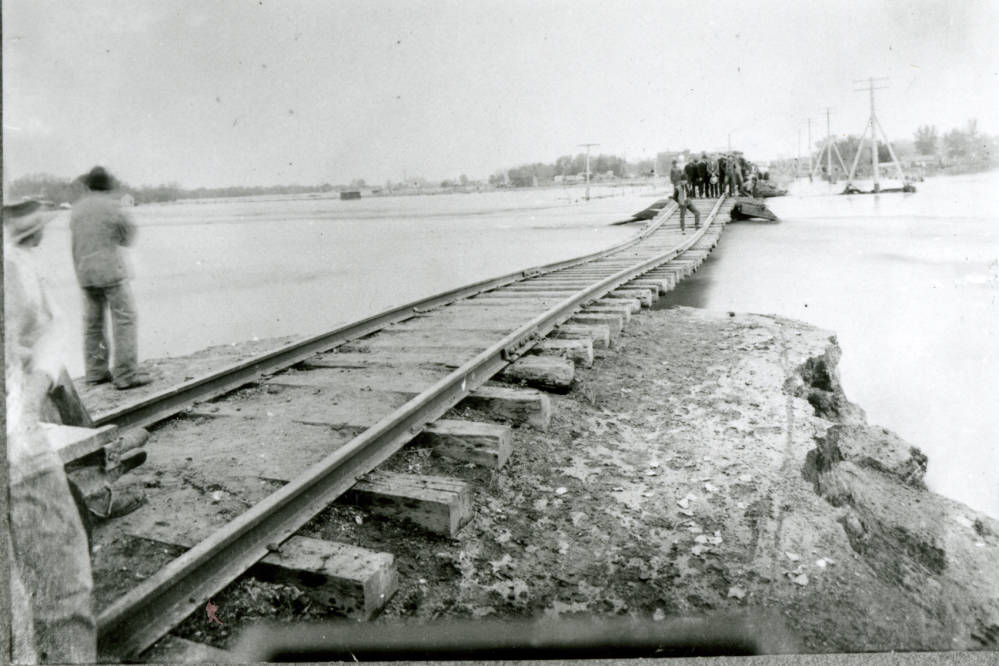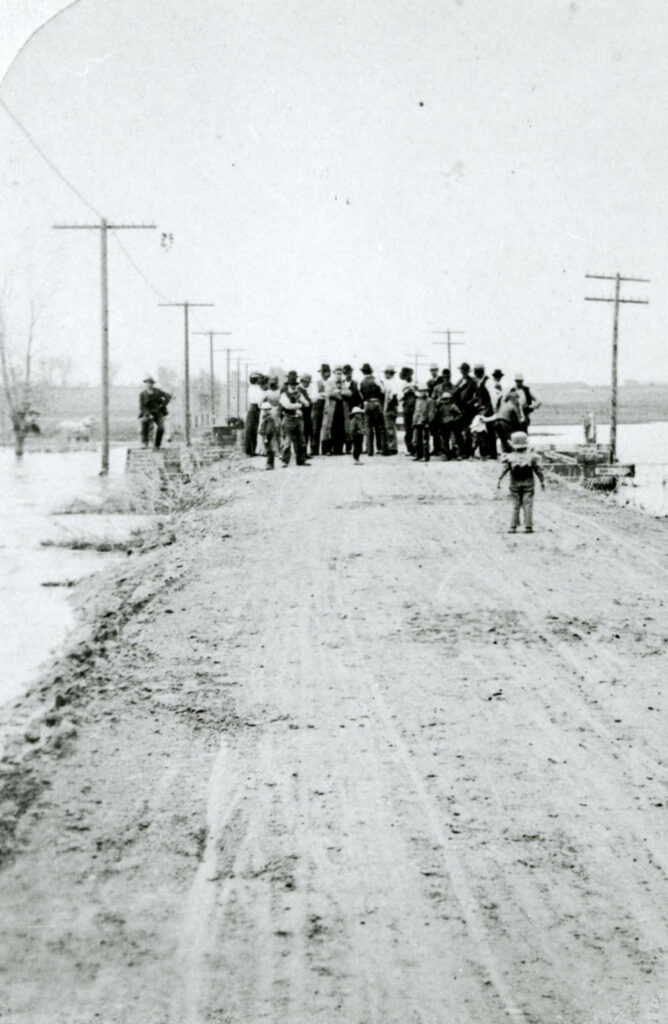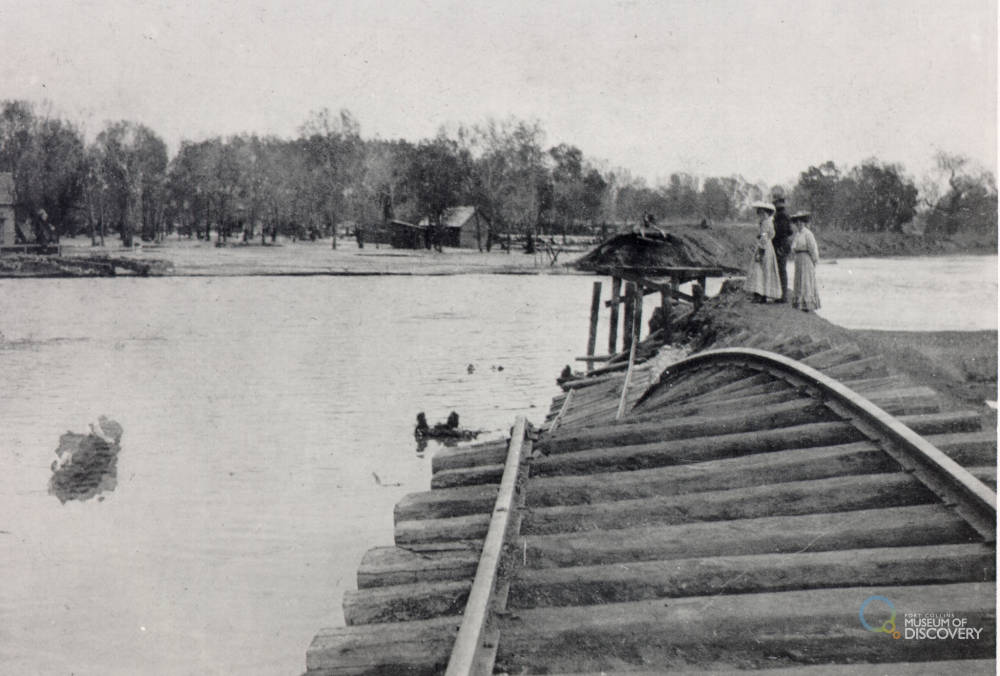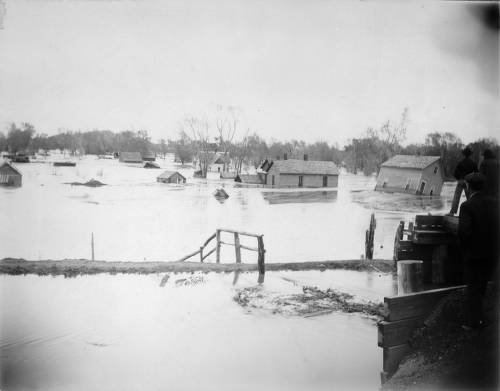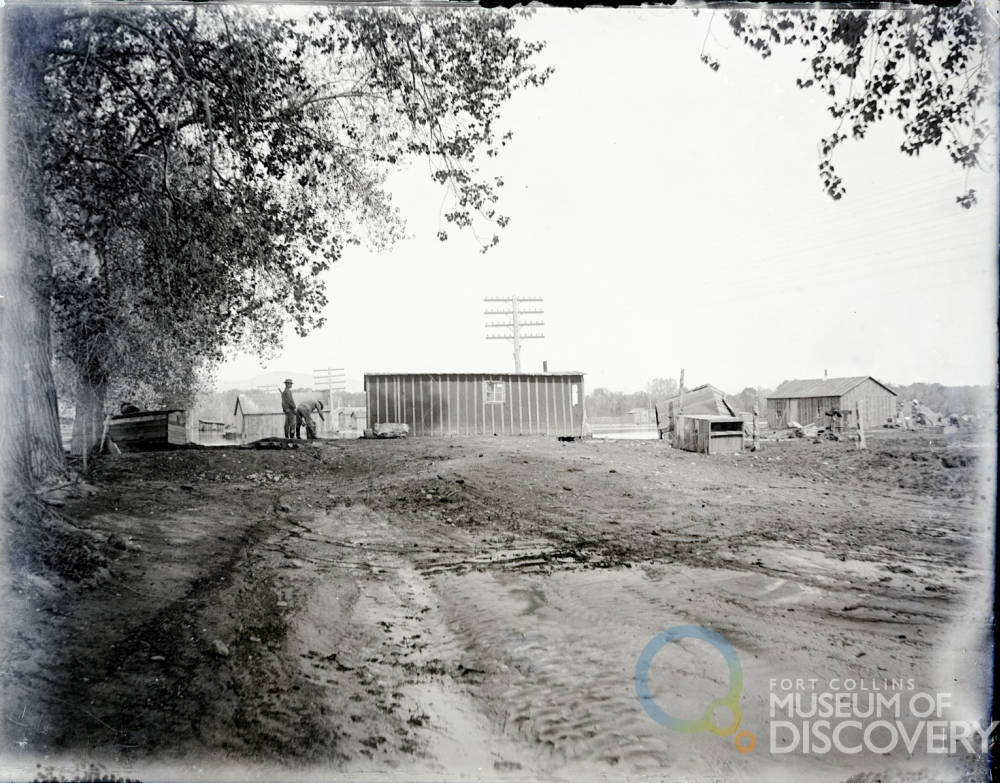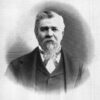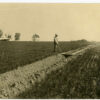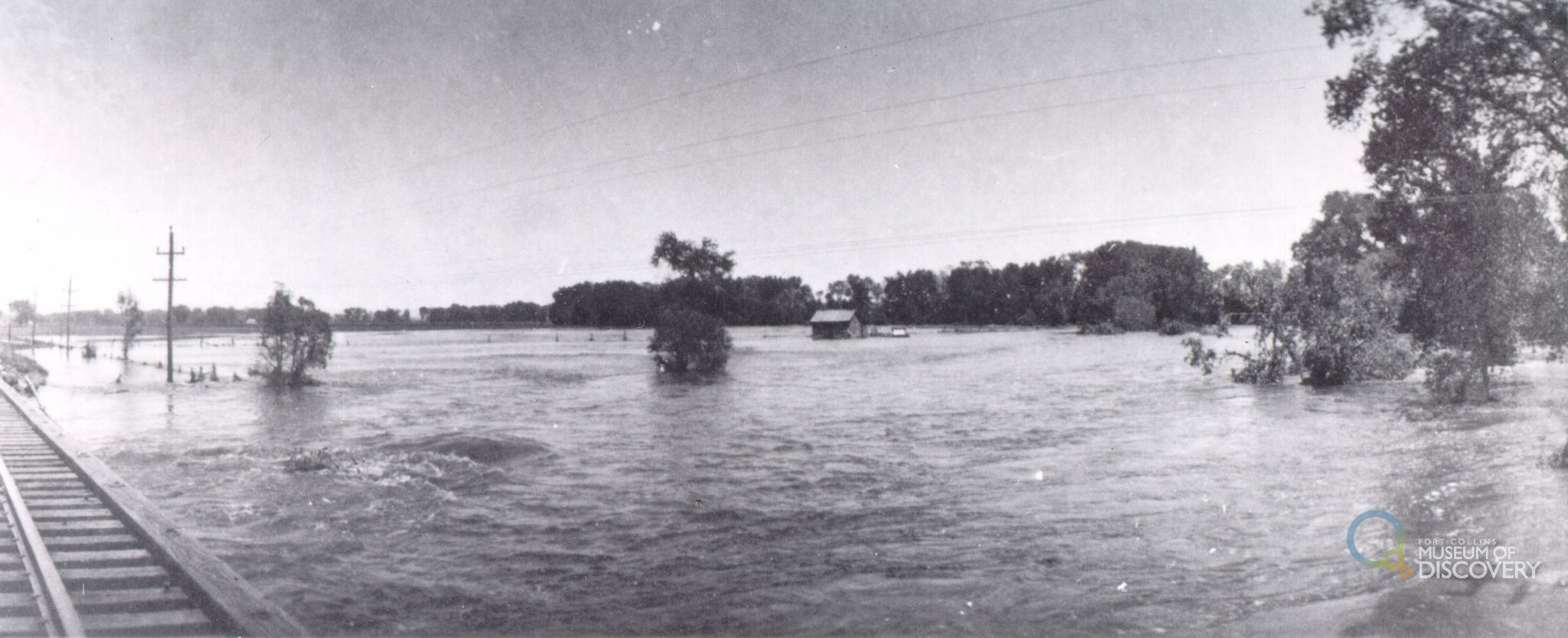
By Heidi Fuhrman, Heritage Interpreter
If you missed part one of our 1904 flood series be sure to give it a read for the full story!
May 20th, 1904. 7pm—The force of the water had rushed through Laporte, Bellvue, and Fort Collins, sweeping homes from their foundations, knocking all but one bridge, and leaving the communities feet deep in water. For the people downstream, however, the flood was just sweeping into their homes.
Near the bend in the Poudre, Robert Strauss’ tenants were trying to convince him to leave, but he refused, saying he had lived by the river for forty years and knew how to survive a flood. He would attempt to leave later as the waters rose, spending the night knee deep in water and dying from exposure the next morning after being rescued. (Robert was one of only two casualties.) His neighbor, Will Lamb, also dismissed the warnings, but retreated with his wife and son to their hayloft for the night as the waters rose, now including the force of the Box Elder Creek.
In Windsor, “…the flood made a general interchange of property, real and personal, that was not destroyed.” For example, “Melvin Kyger, eight miles from Greeley counted elven houses that floated past his house within an hour and twenty minutes.” William Jones lost 60 of his chickens and all 100 of his turkey eggs but did manage to save his carpets (whew).
Because the landscape levels out, the flood traveled slower through the Timnath and Windsor areas, giving the people downriver more time to prepare and move to higher ground. In fact, the flood didn’t even reach Greeley until the wee hours of the next morning (May 21st) but rose from four to fifteen feet. Like their neighbors in Fort Collins and Windsor, the people of Greeley watched from the edges of the much wider Poudre, as the forceful water swept away bridges, houses, chickens on haystacks, and destroyed the cabbage and onion crops. As the Greeley Tribune later observed, “Thousands of people watched the water from every vantage point, and it really looked more like a holiday for the town than a calamity that was destroying thousands of dollars worth of crops.” (May 26, 1904)
By May 22nd, the flood had moved on, leaving feet of mud and destruction in its path. As the Larimer County Independent Reported:
”A wild, roaring, surging flood swept down through the Cache la Poudre valley Friday afternoon and evening doing incalculable damage to property. Houses, tents, barns, sheds, fences, and bridges were swept from their moorings and dashed to pieces by the angry waters. Thousands of acres of the choicest garden and farm lands in the valley covered with luxuriant crops, were laid waste leaving wreck and desolation triumphant.
Larimer County Independent, May 25, 1904
One of the biggest concerns as the communities looked towards the future was the repairs needed to the irrigation ditches. Ironic that water in abundance destroyed the very systems the agriculture communities relied on for water in scarcity, but the reality that few headgates remained, and ditches were filled with mud cast a very real reality that irrigation, and therefore a harvest, would be impossible. Though the system did need thousands of dollars of repairs it was not as bad as first anticipated and there was a harvest in 1904.
Apart from the irrigation damage, there was only one standing (or safe) bridge between Greeley and Bellvue and hundreds of families had lost their homes (including 150 of the German from Russian immigrant families in Fort Collins). In the wake of devastation, Will Lamb, the farmer from Timnath who had spent the night in a hayloft, reminded the communities that sometimes humor and gratitude are the most needed in times of crisis:
”May 22—Fort Collins people may blow about their fine waterworks and filters all they please, but I do not believe they amount to a whoop, because there were great quantities of water that went by here last Friday night that never had been filtered, judging from the sediment it left in my barn. Judging from the smell I couldn’t help from wondering if Lon James and family hadn’t been washing their feet in it… I found my hayrake over in Nelson’s field. He swears he did not put it there so I will let him off this time … I feel sorry now that we fed our chickens at all last Friday, as a good portion of them were drowned that night … It took our front gate too, the d---- knows where, I don’t… I was thankful for small things and big ones…this was one of the big ones and I fill truly thankful we are still here.
Larimer County Independent, May 25, 1904, page 8
Floods are not uncommon on the Poudre. The City of Fort Collins is located where it is today due to a flood on the Poudre in 1864 that destroyed the first Camp Collins, originally located closer to Laporte. Residents of the area might remember when the Poudre and Big Thompson flooded in 2013 or when the Spring Creek flooded in 1997 after torrential rains. But the 1904 storm remains the peak discharge in cfs for the Poudre River. For the people along the Cache la Poudre River, both past and present, water—in abundance and scarcity—continues to be one of our greatest adversities.
References
“Destructive Floods in the United States in 1904”, United States Geological Survey, 1905. p154-156.
“Floods in Colorado,” United States Department of the Interior, 1948. p51-59.
Fort Collins Express, May 25, 1904. (Access on Newspapers.com)
Fort Collins Weekly Courier, May 25, 1904. [Read the full newspaper on the Colorado Historic Newspaper Collection].
Greeley Tribune, May 26, 1904. [Read the full newspaper on the Colorado Historic Newspaper Collection].
Larimer County Independent, May 25, 1904. (Accessed on Newspapers.com)
Windsor Beacon, May 28, 1904. (Accessed on Newspapers.com

